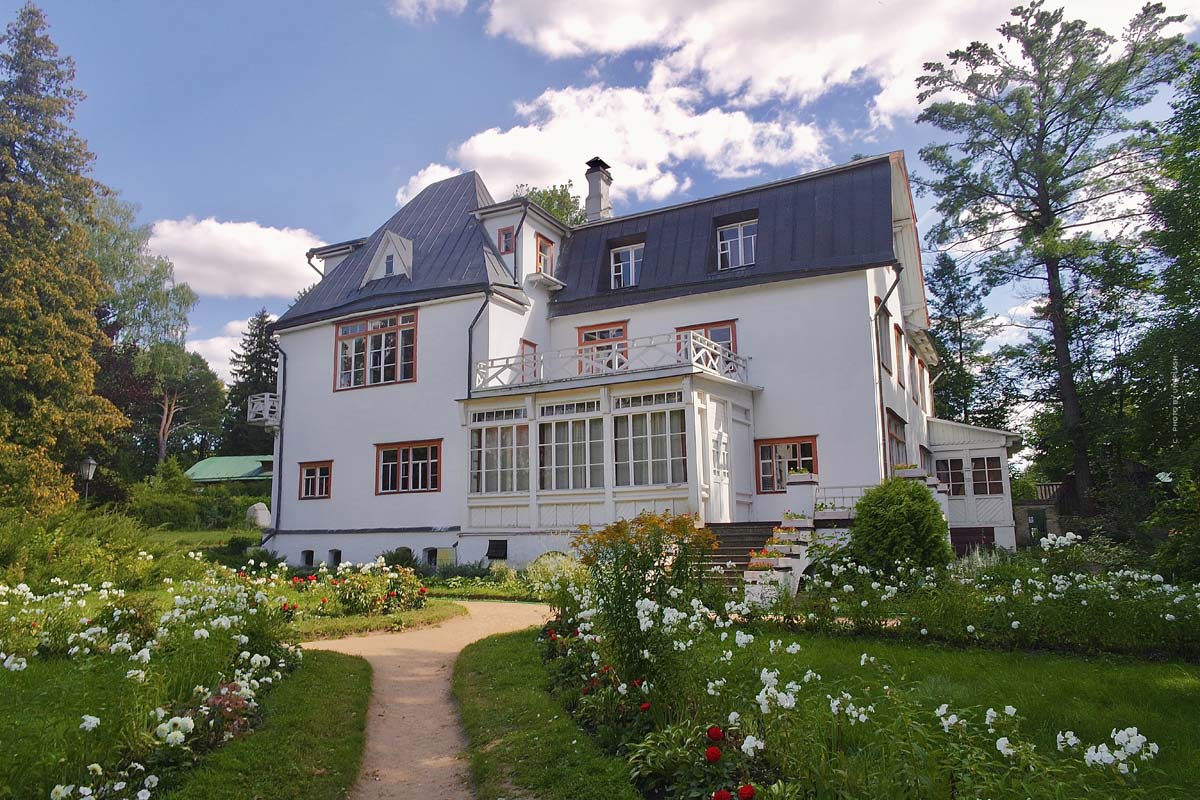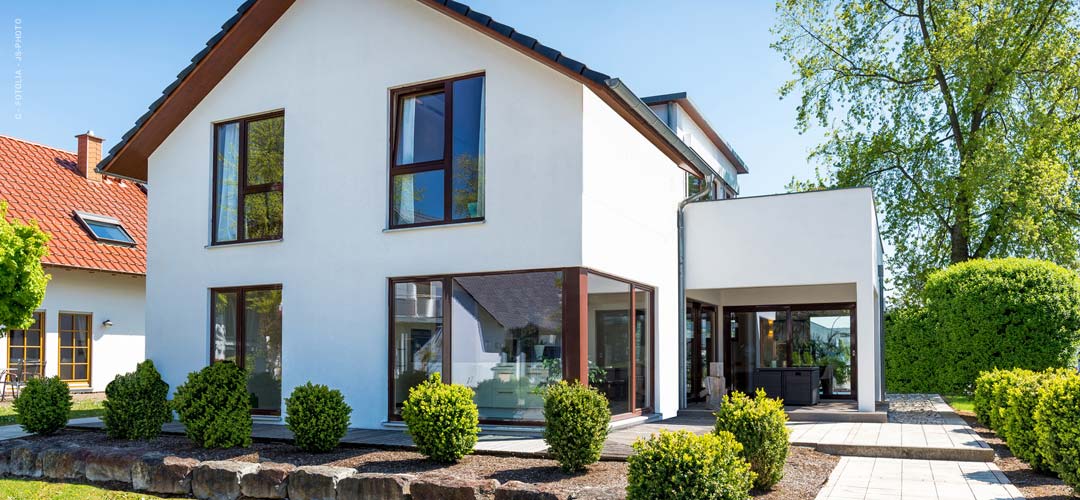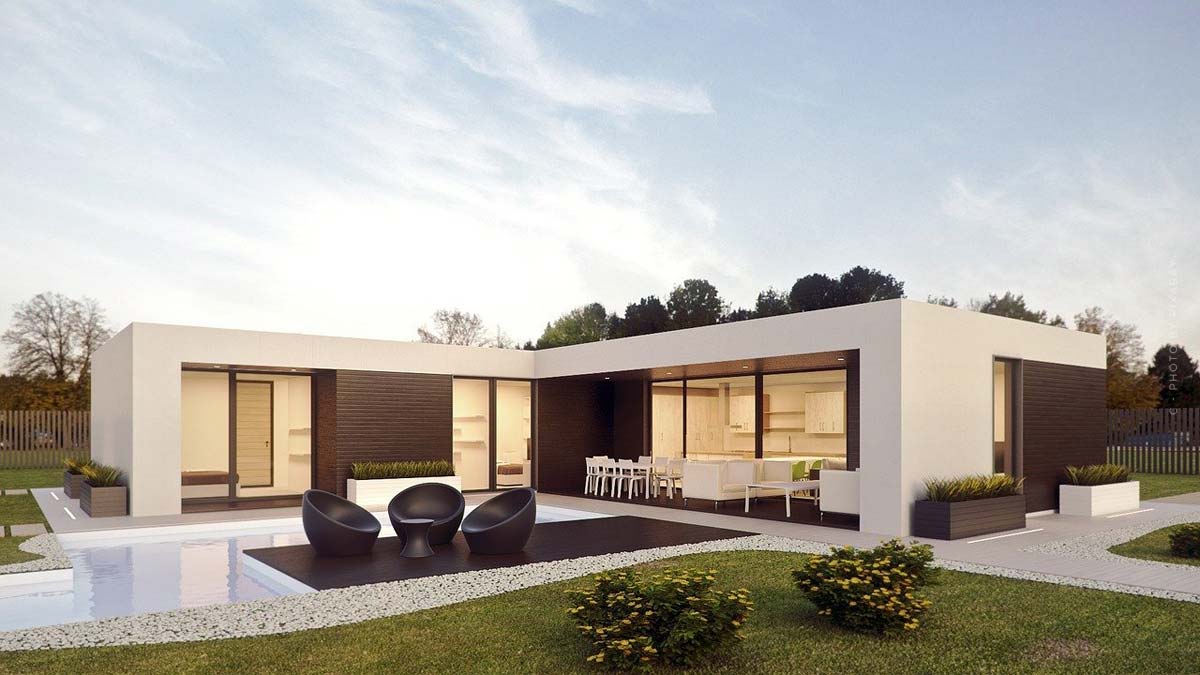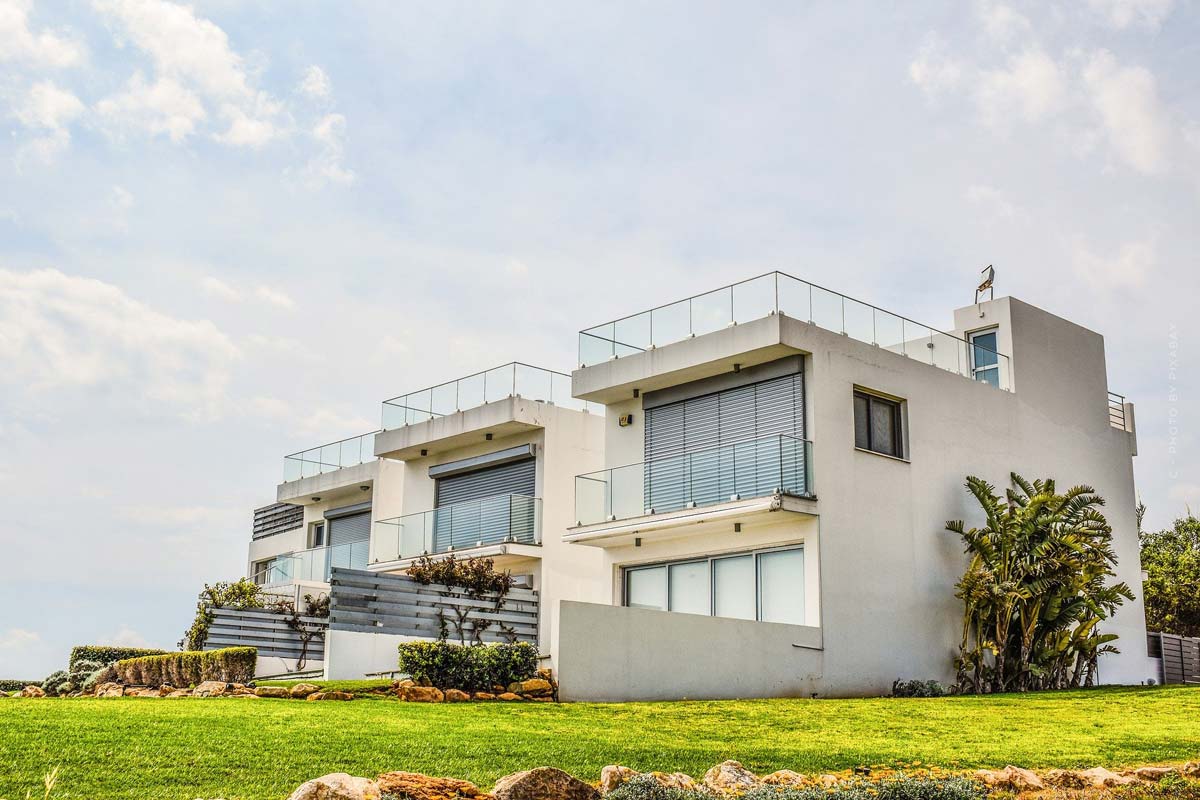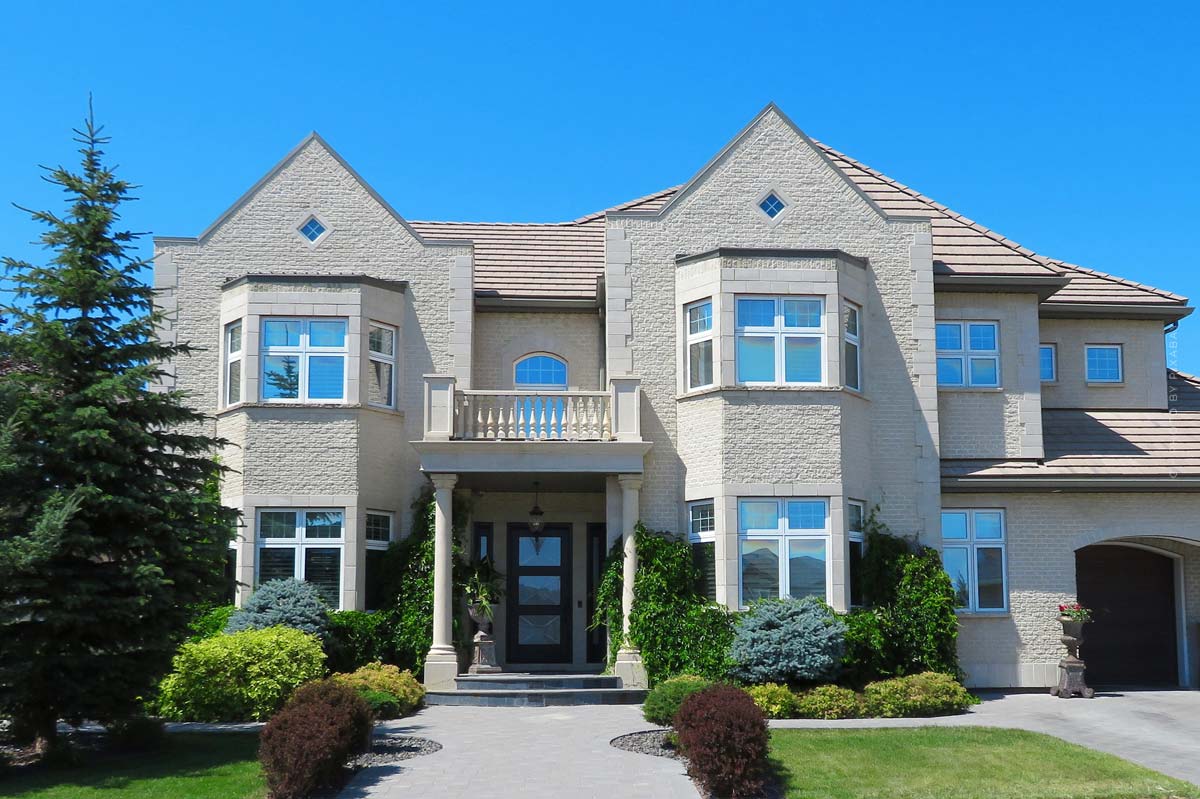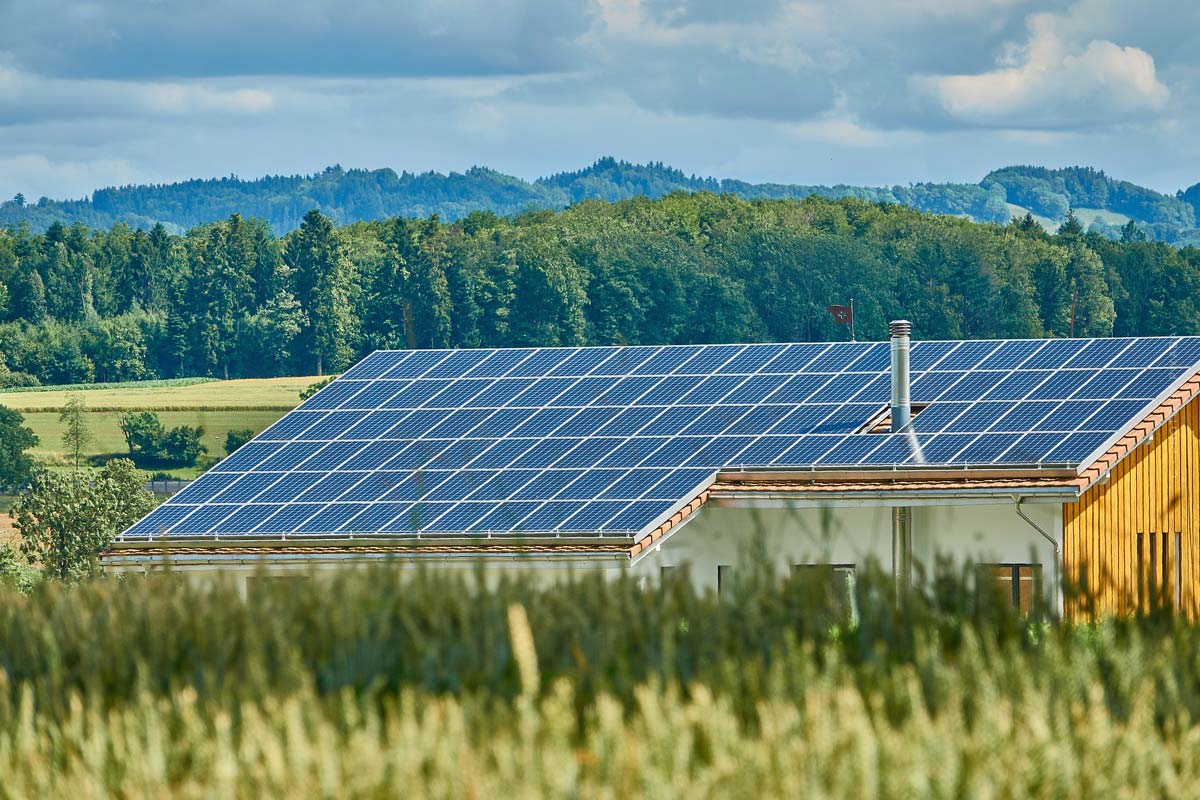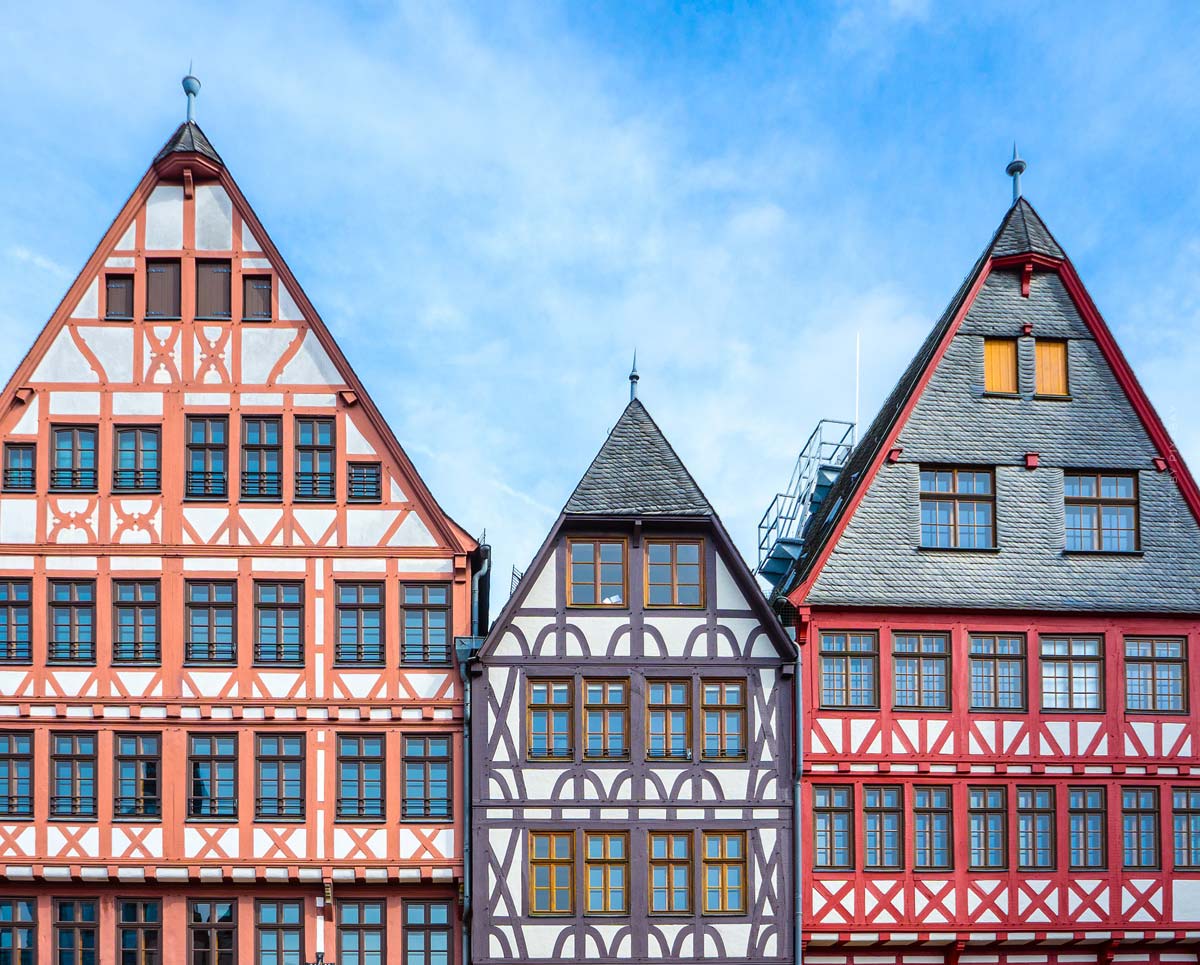Solid house: materials, costs, duration & advantages of building your dream house
Massive house – You want to finally invest money in your first home and buy a house? Then you’ve come to the right place! Solid or prefabricated house, semi-detached house or a terraced house? Numerous factors such as costs, duration of construction or the materials play a role here and make the advantages and disadvantages of a
What is a solid house? Features, durability and construction
A solid house is the construction method of a house, in which a house is built according to the plan of an architect with solid building materials. Each house here becomes unique due to the individual wishes of the respective builder.
The opposite of a solid house is a prefabricated house: In a prefabricated house, the house is built according to the modular principle and consists of a wooden construction. The house is built brick by brick. The building materials are delivered to the construction site, where they are assembled into a finished house by specialist companies. The building materials used for walls and floors are aerated concrete, sand-lime bricks or goat bricks. The staircase and roof construction, on the other hand, is usually made of wood.
On average, a house of this construction type has a lifespan of 100-120 years and is considered the older of the two construction variants. In terms of price, the average price for a square meter of a new building is 1,300 euros. for the pure construction costs without the land. There is no limit here for the upper price limit.
Tip. You want to learn more about risks and factors of building a house? Then take a look at our article on building a property! Here you will find expert videos that give you tips and tricks and information on important topics such as financing, equity & Co.
Are you looking for the right house? Then check out our guide! Here you will find definitions, meanings and lots of information: House types from A-Z
Room layout: room, space & unlimited possibilities
Since you can plan your solid house individually, the room layout of your house is completely up to you. Whether it’s a walk-in wardrobe, music room, open-plan kitchen or a house with a sauna – there are no limits to your wishes.
Advantages and disadvantages: Lifetime, individuality, costs & Co.
Even today, the majority of builders in Germany opt for an architect-designed house in solid construction. In the following two paragraphs you will find out which advantages and disadvantages this entails.
Advantages: high durability, individuality & own contribution
If you choose a solid house for the construction of your house, this will bring some advantages compared to a prefabricated house.
The biggest advantage and the reason why most builders choose a solid house is the great degree of individuality that is given to you. Size, floor plan, materials, shape and equipment of the house can be chosen at will.
The solid construction method influences the indoor climate and the air and moisture circulation inside the room through the material (concrete or stone). Other advantages of the building material are high sound and fire protection.
Up to 100 to 120 years of life – that’s what a solid house promises you. On average, three generations can live in this house. In contrast to a prefabricated house, this one is also more resistant to environmental influences such as flooding or heavy rain.
Solidity pays off not only in a long life span, but also in a possible later sale: Even after a few years or decades, a higher price can be achieved with a solid house than with a prefabricated house.
One way to save costs on a solid house is to do a lot of the work on the house yourself. Craftsmanship can thus reduce the costs of the craftsmen and also costs in the construction financing. The own work can be credited to you up to a certain point as equity.
- High degree of individuality (size, floor plan, material, equipment)
- Better indoor climate & air and moisture circulation
- High fire and sound protection
- Long service life
- Protected against environmental influences (flooding, heavy rain)
- Higher resale value
- Own contribution
Source: Massivhaus (Lukinski.de)
Disadvantages: long construction time, delays & high costs
Despite all the advantages, a solid house also brings negative aspects. The clarification of the financing should take place before the construction. If necessary, a possible subsidy programme can be claimed from credit institutions. Since financing of the new building and the rent of the past dwelling are parallel stemmed, this could be a good financial solution. Long periods of bad weather can cause delays in construction. This not only acts as a longer wait for the home, but also becomes an additional cost. This is where commitment interest can occur over a long period of time.
Many builders shy away from building a solid house because of the long construction time it takes to complete it. This construction time is often extended by long drying times of the components, this leads to the fact that the date of completion is delayed even further. Some stages of construction can only be completed depending on the weather such as work on the roof truss of the house.
For the construction of a solid house several different craftsmen are needed: Bricklayers, roofers, painters and tile layers are just the beginning. The coordination of these different craftsmen can be extremely difficult. Construction errors as well as compliance problems can easily occur.
- High investment
- Long construction time
- Delay of the construction
- Weather dependency
- Longer drying times
- Many different trades
For whom is a solid house suitable? Families, creative people & Co.
For whom is the solid house suitable? This solid house is suitable for large families, individualists and people who would like to use their house as an investment in the future. We show you here which target groups benefit from which aspects of the solid house.
Large families: house for several generations
A large family will find a dream home in a solid house. As the house has a long lifespan, this house can also be wonderfully bequeathed to future generations.
Individualists and creative people: house according to your wishes & needs
Is a solid house the right choice for you? You are the right candidate for a solid house if the individual plays a big role for you when building your house. Instead of a standard house, a house can be created according to your personal wishes and needs.
Developers who want to use a property as an investment
Since a solid house is in a significantly more expensive price segment than a prefabricated house, a solid house is more something for high earners. A solid house is also suitable for people who are looking for an investment and want to use the house later as an investment.
Construction of the solid house: what, when and how
Building a solid home can be done through three different ways: Through a developer, a general contractor, or independently.
The advantage of building through a developer is that you don’t have to worry about coordinating the construction work, as this is completely taken care of by the company. After the completion of the construction, the house will be handed over to you ready to move in.
When building with a general contractor, the coordination of the construction site is taken from you by the company. However, the land is usually not included in the service. As with building with a developer, you also have a contact person. Your contact person coordinates your schedule and ensures that the construction work is carried out correctly. The responsibility for the construction of the house is therefore in the hands of a third party.
The last option is to take the construction into your own hands and coordinate construction work and various necessary tradesmen yourself. Especially inexperienced builders should know that they face a great challenge here, because the construction of a solid house can be extremely complicated and stressful. Therefore, building a house on your own is only advised if you already have experience in the building trade. Wrong decisions can otherwise lead to a huge loss of money.
- Property developer: Coordination is completely taken over by the company, handover when the house is ready to move in, specific contact person
- General contractor: coordination of the construction site, land not included, specific contact person
- Independent construction: complete coordination on own responsibility, stress, experience needed
Duration of the construction of a solid house: from the basement to the roof
Building a solid house takes time, waiting times for drying out and drying through delay the time until the next step takes place. Another decisive factor is the weather. Usually the main construction phase is moved to the summer, so that most of the construction can take place in the warm and preferably without much rain. The first step in the construction of a solid house is the casting of the floor slab and the construction of the basement. The second step is the masonry of the walls and the construction of the intermediate ceilings. The roof and the interior fittings are the last step.
Selecting materials correctly: Concrete, brick, sand-lime brick
With a house built stone on stone, you have to choose between different materials. Brick is considered the classic building material and the oldest building block in the world. The advantage of this building material is the good heat and sound insulation and the short drying time. A low susceptibility to mold and a good fire protection are other positive aspects of the stone. However, it must be noted that certain types of brick are not suitable for load-bearing walls.
Aerated concrete is convincing due to its light weight with a high insulating effect. However, a high sound insulation is not given here. In addition, the bricks easily absorb moisture and require good protection against environmental influences.
You are well protected from noise with the heavy sand-lime brick. In addition, there is the high compressive strength and the insensitivity to the weather. Negative aspects are the poor thermal insulation and the costly processing.
Lightweight blocks are a combination of materials that combine the advantages of different materials. This material is made of cement with added pumice or expanded concrete. Robust and good heat and sound insulation – these are the advantages of lightweight blocks. The lack of frost resistance, however, requires supplementary protection against the weather.
- Brick: good heat and sound insulation, low susceptibility to mould, good fire protection, not suitable for load-bearing walls
- Aerated concrete: light weight, high insulating effect, high sound insulation, requires protection against environmental influences
- Sand-lime brick: high compressive strength, insensitive to weathering, poor thermal insulation, costly processing
- Lightweight brick: robust, good heat and sound insulation, lack of frost resistance
Mixture of prefabricated house and solid house: The prefabricated solid house
An alternative to the solid house is the prefabricated solid house. The prefabricated solid house is an intermediate form between the prefabricated house and the solid house. A prefabricated house with wooden construction can be selected from the catalogue. The house is then rebuilt with solid materials by a builder. However, the costs and construction time are based on the solid house and not on the prefabricated house.
Individual furnishing according to your taste
As individual as you can design your house from the outside, you can also adapt the interior to your individual taste. Different interior styles are waiting to be discovered by you and to fill your house with life. In our interior brand guide you will find numerous luxury brands and their homeware collections such as Dior Maison,
Also exciting: Our articles on the subject of room furnishing, as well as our comprehensive guide with the trendiest interior styles: Furnishing styles XXL.
